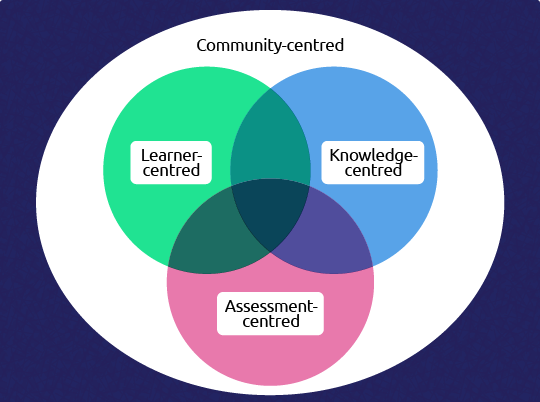Principles of a learning environment
When developing a learning environment, the key considerations include what the central core of the learning activities propose to foster, and how they are spread across the course. As teachers, we can create various types of ‘centred’ learning environments:

Image from: Taken from: Bransford, J., Brown, A., & Cocking, R. (2000). How People Learn: Brain, Mind, Experience, and School: Expanded Edition.
| Learner-centred environments |
|---|
Learner-centred environments are designed for the active construction of knowledge by and for learners. What students bring to the learning environment and what they are actually learning (as opposed to what they are being taught) are central to the notion of learner-centredness. Examples include:
|
| Knowledge-centred learning environments |
Knowledge-centred learning environments are those which support students' deep investigations of big ideas through generative learning activities which include opportunities for reflection, discussion, and feedback. Examples include:
|
| Assessment-centred learning environments |
Assessment-centred learning environments provide frequent, ongoing, and varying opportunities for assessment, including opportunities for revision and for self and peer assessment. Examples include:
|
| Community-centred environments |
Community-centred environments value collaboration, the negotiation of meaning, respect for the multiple perspectives around which knowledge is constructed, and connections to the local community and culture. Examples include:
|
Resources, strategies or assistance
Resources - Text/Articles
- Australian Learning & Teaching Council (2009) Spaces for Knowledge Generation – Forum Report
- Bransford, J., Brown, A., & Cocking, R. (2000). How People Learn: Brain, Mind, Experience, and School: Expanded Edition.
Resources – Websites
Assistance
- Contact your Institute Learning Designer to explore the best combination of learning environments for your course.